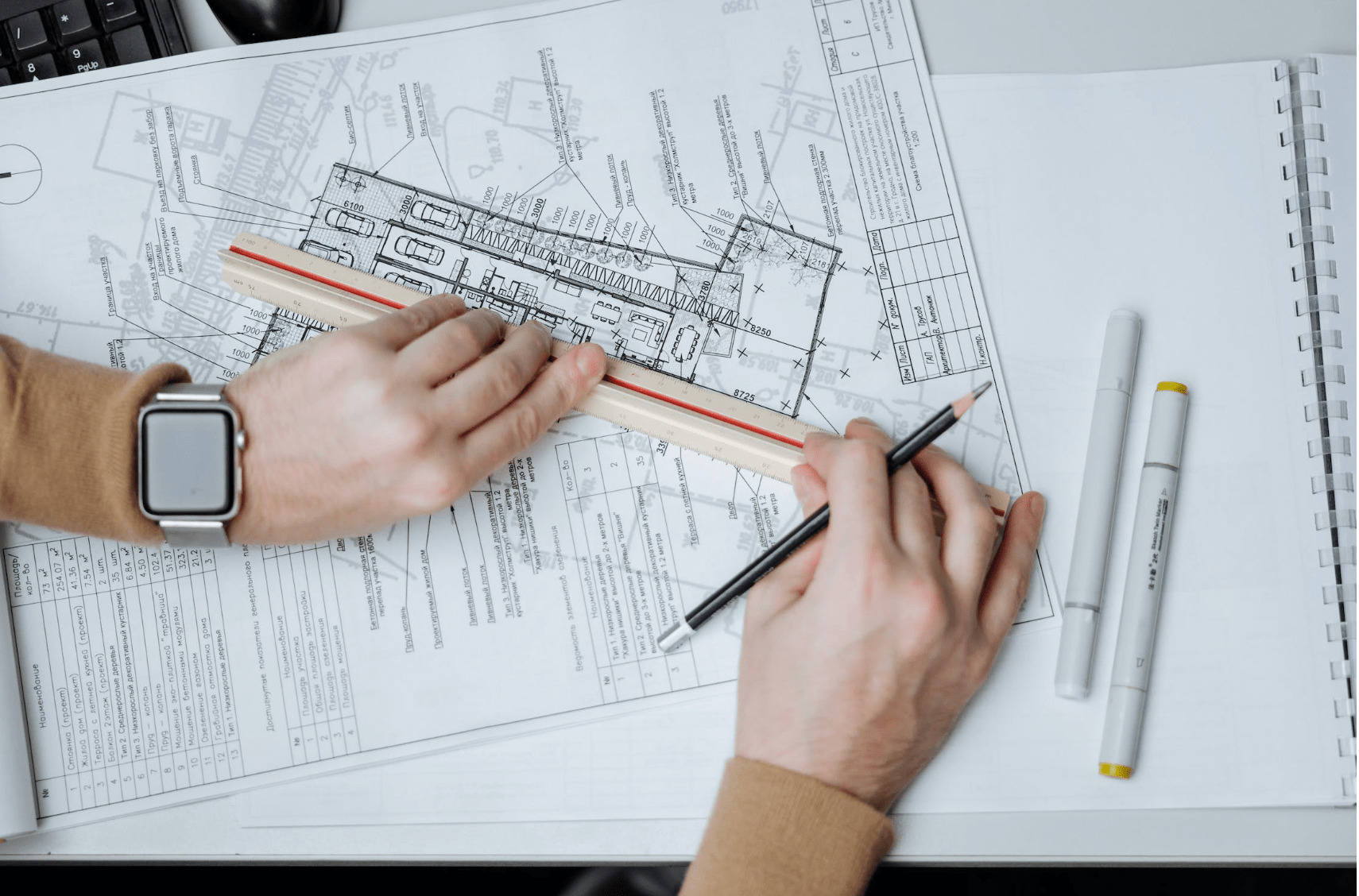Architect Salary Overview by Location and Experience
Recognizing the Diverse Job Paths Available for Aspiring Architect
As an aspiring Architect, you have a globe of job courses waiting for you. Each course supplies special difficulties and chances to use your creativity and technological know-how. Whether you're attracted to standard design or the subtleties of lasting layout, there's a specific niche that straightens with your passions. Comprehending these diverse alternatives can form your professional journey, but which direction will you pick to explore first?
Traditional Style: Creating Frameworks and buildings
Conventional architecture concentrates on making buildings and frameworks that blend functionality with aesthetic allure. As you discover this area, you'll value the detailed equilibrium in between kind and objective. You'll learn to attract ideas from historical designs, including elements like balance, materials, and craftsmanship. Your layouts can reflect social heritage, showcasing neighborhood customs while fulfilling modern requirements.
You'll create skills in composing, model-making, and site analysis, permitting you to imagine and communicate your concepts efficiently. Involving with clients, you'll need to understand their vision and convert it into practical layouts.
Additionally, building codes and sustainability techniques are vital in your job, ensuring your frameworks are safe and ecologically pleasant. As you expand in your career, you'll locate opportunities in household, commercial, or perhaps repair tasks, each offering distinct challenges. Welcoming conventional architecture leads the method for a fulfilling occupation that admires the past while forming the future.
Urban Planning: Shaping Neighborhoods and Public Spaces
As an ambitious Architect, you can play a necessary role as a city planner, transforming exactly how communities engage and function. By employing area interaction methods, you'll guarantee that homeowners have a voice fit their atmosphere. Plus, integrating lasting design principles will assist develop spaces that not just satisfy today's demands but also safeguard the future.
Role of Urban Planners
While numerous might think of architects as the single visionaries behind buildings, metropolitan organizers play a crucial role in forming the more comprehensive landscape of neighborhoods and public areas. By teaming up with various stakeholders, you'll help design parks, transport systems, and household areas that advertise social interaction and accessibility. Your competence in spatial layout and area characteristics enables you to imagine future development while maintaining social heritage.
Area Engagement Strategies
Effective area engagement approaches are essential for city planners to guarantee that the voices of citizens are listened to and valued in the preparation procedure. To promote significant discussion, you need to prioritize open online forums and workshops where area participants can reveal their concepts and problems. By actively listening and integrating feedback, you'll produce rooms that mirror the area's requirements, eventually leading to even more lasting and effective urban environments.
Lasting Layout Concepts
When designing urban areas, including sustainable layout principles is important for developing environments that flourish both environmentally and socially. Take into consideration integrating green spaces, like parks and gardens, to enhance biodiversity and improve air quality.
Designing with water preservation in mind is also essential-- consider rainfall gardens and absorptive surface areas to manage stormwater. Involving area participants during the preparation procedure assurances that the areas you produce meet their requirements and motivate social communication. By welcoming these concepts, you'll add to vivid, lasting city landscapes that profit everybody.

Landscape Architecture: Creating Sustainable Outside Environments
As you check out landscape architecture, you'll uncover necessary design concepts that create practical and lovely outdoor areas. Sustainable practices play an essential function in ensuring these atmospheres flourish while decreasing environmental effect. Plus, you'll find a selection of career opportunities that permit you to make a genuine difference in how individuals communicate with nature.
Style Concepts in Landscape
Understanding layout principles in landscape architecture is crucial for creating lasting outside atmospheres that balance with nature. You'll need to consider components like equilibrium, range, and proportion to ensure your layouts feel natural and inviting. Including native plants not only improves biodiversity but additionally minimizes water usage, making your landscape durable. Think concerning the flow of area and exactly how individuals engage with it; pathways and seating areas must invite exploration and relaxation. Furthermore, take note of seasonal adjustments, designing with materials that match the surroundings year-round (Architect). By focusing on sustainability and visual appeals, you can develop outside areas that enrich the area and promote wellness. Accepting these principles will set a strong foundation for your profession in landscape design.
Lasting Practices Introduction
Sustainable techniques in landscape style not only concentrate on aesthetic appeals yet also focus on eco-friendly health and source conservation. By incorporating indigenous plants, you boost biodiversity and minimize the requirement for chemical fertilizers and chemicals. Applying reliable watering systems assists preserve water and decreases drainage, shielding nearby communities. You can make areas that promote soil wellness, such as using natural products and exercising permaculture concepts. Furthermore, incorporating green infrastructure, like rainfall gardens and porous sidewalks, help in stormwater management and reduces urban warmth. When you produce exterior atmospheres with sustainability in mind, you add to a much healthier world and give spaces that foster community link. Inevitably, these practices ensure your designs benefit both individuals and the environment for years to come.
Profession Opportunities Exploration
With a strong foundation in sustainable methods, landscape architecture offers a selection of profession courses that enable you to make a significant effect on the environment. Urban organizers commonly team up with landscape designers to develop environment-friendly areas in metropolitan settings, boosting city livability. If you're enthusiastic concerning education and learning, take into consideration coming to be a landscape architecture educator, inspiring future generations.
Sustainable Design: Concentrating on Eco-Friendly Practices
As you discover your profession in architecture, embracing environmentally friendly methods can set you apart in a competitive area. Sustainable style focuses on producing structures that lessen ecological impact while improving occupant wellness. By incorporating eco-friendly products, energy-efficient systems, and sustainable building methods, you'll contribute this link to a greener future.
Beginning by getting understanding of environment-friendly certifications like LEED or BREEAM, which can bolster your credentials. Take into consideration just how natural light, air flow, and thermal efficiency can optimize layout. Work together with designers and ecological consultants to innovate services that lower waste and save resources.
Do not fail to remember the value of area participation-- interesting local stakeholders can influence layouts that balance with the environment. As customers significantly focus on sustainability, your know-how in environment-friendly practices will certainly not only attract tasks yet additionally meet your passion for responsible architecture. Welcome this critical element of the profession, and see your job thrive.
Historical Preservation: Shielding and Restoring Social Heritage
While you begin on your architectural trip, take into consideration the important function of historical preservation in keeping our cultural heritage. This field concentrates on the defense and repair of considerable structures, websites, and structures that inform the stories of our past. By participating in historic conservation, you'll help safeguard the architectural heritage that forms area identification.
As a historic conservation Architect, you'll evaluate historical value and assess the condition of structures. You'll work carefully with conservationists and chroniclers to guarantee authentic reconstruction techniques are employed. This profession path enables you to blend creativity with study, enabling you to make remedies that value initial products and craftsmanship.
Your job not only adds to sustainability by recycling existing buildings yet likewise cultivates a link sense of satisfaction within areas. Welcoming this path will certainly aid you end up being a guardian of background, maintaining the tales and looks that enrich our lives.
Inside Design: Enhancing Indoor Spaces
Historic conservation and interior design both share a dedication to boosting the built environment, yet they concentrate on different facets. While historical preservation stresses maintaining a framework's historical and cultural value, interior architecture zeroes in on optimizing indoor spaces for capability and appearances.
As an aspiring Architect, you'll locate that interior architecture enables you to blend imagination with technological abilities. You'll develop rooms that not only look good however likewise advertise convenience and efficiency. This field entails understanding exactly how light, color, and products interact within an area, impacting state of mind and functionality.
You'll work with numerous projects, from domestic homes to commercial offices, making sure that each atmosphere satisfies the demands of its occupants. By prioritizing individual experience, you can change interiors into practical and inspiring spaces, making a considerable effect on how people connect with their environments. Accept the possibility to boost interior environments and form the means people live and work.
Industrial Style: Merging Functionality With Aesthetics
Industrial style plays an important function in developing products that effortlessly blend appearances with capability, making certain that what you utilize day-to-day is not just visually enticing yet likewise practical. As an aspiring Architect, you might immerse on your own in this field, focusing on developing whatever from furniture to customer electronics. Your work includes recognizing individual needs, products, and manufacturing procedures, permitting you to develop ingenious services that improve daily experiences.
In commercial layout, you'll usually collaborate with designers, marketing experts, and suppliers, making certain that your layouts are not only gorgeous however also viable. This profession course uses a vibrant setting where creative thinking fulfills functionality, making it a satisfying selection for designers interested in forming the items of tomorrow.
Often Asked Inquiries
What Educational Certifications Do I Need to Become an Engineer?
To become an architect, you'll need an expert degree in design, typically a Bachelor's or Master's. Furthermore, you'll need to complete a teaching fellowship and pass the Architect Enrollment Examination to exercise legally.
Exist Qualification Needs for Various Architectural Job Paths?
Yes, there're certification demands for numerous architectural courses. Architect. You'll require to pass tests, full internships, and in some cases pursue specialized training, depending on your picked emphasis, like landscape style, urban style, or historic preservation
What Software Skills Are Essential for Engineers Today?

How Can I Gain Practical Experience While Studying Style?
You can get sensible experience by interning at architectural firms, taking part in style competitors, offering for community tasks, or teaming up with classmates on real-world projects. These chances improve your abilities and construct valuable connections in the sector.
What Job Opportunities Exist Outside Standard Style Firms?
You can explore various job possibilities outside standard architecture companies, like metropolitan planning, interior decoration, landscape design, construction administration, realty growth, or even roles in sustainability consulting. Each offers one-of-a-kind obstacles and incentives.
Whether you're drawn to traditional style read more or the subtleties of lasting layout, there's a specific niche that straightens with your passions.When creating metropolitan rooms, incorporating sustainable layout principles is vital for creating environments that flourish both ecologically and socially.As you explore landscape style, you'll find necessary style principles that develop gorgeous and functional exterior rooms.Comprehending design concepts in landscape design is essential for producing lasting outdoor environments that balance with nature.In commercial design, you'll frequently team up with designers, makers, and marketing experts, guaranteeing that your layouts are not only lovely however likewise practical.